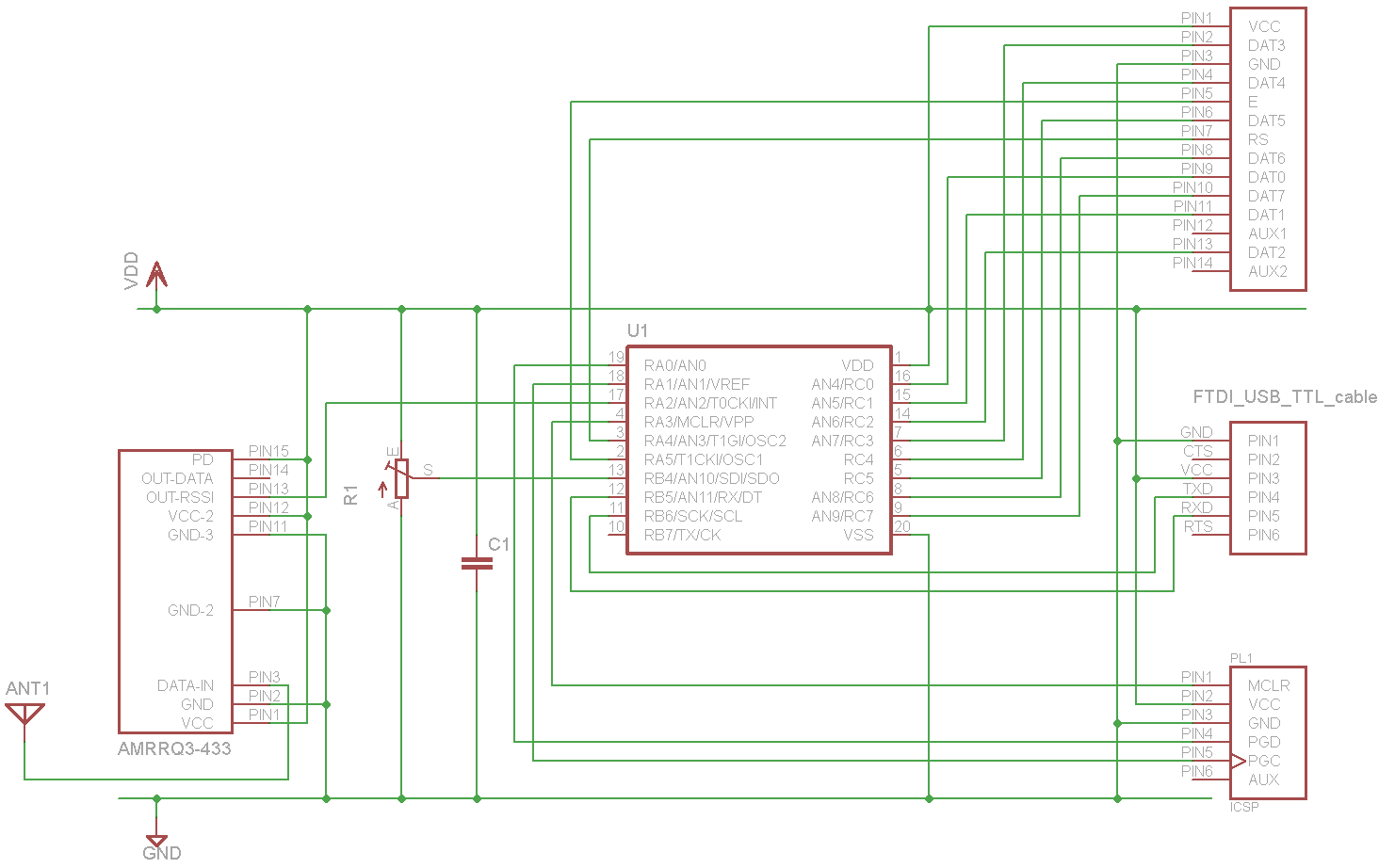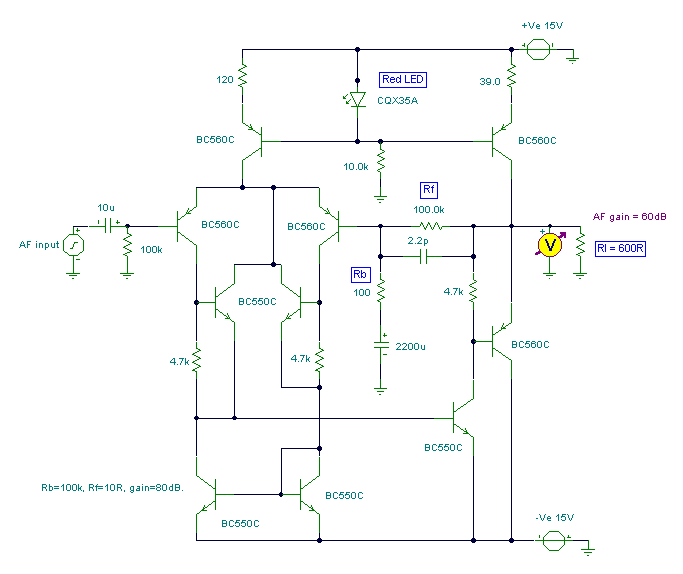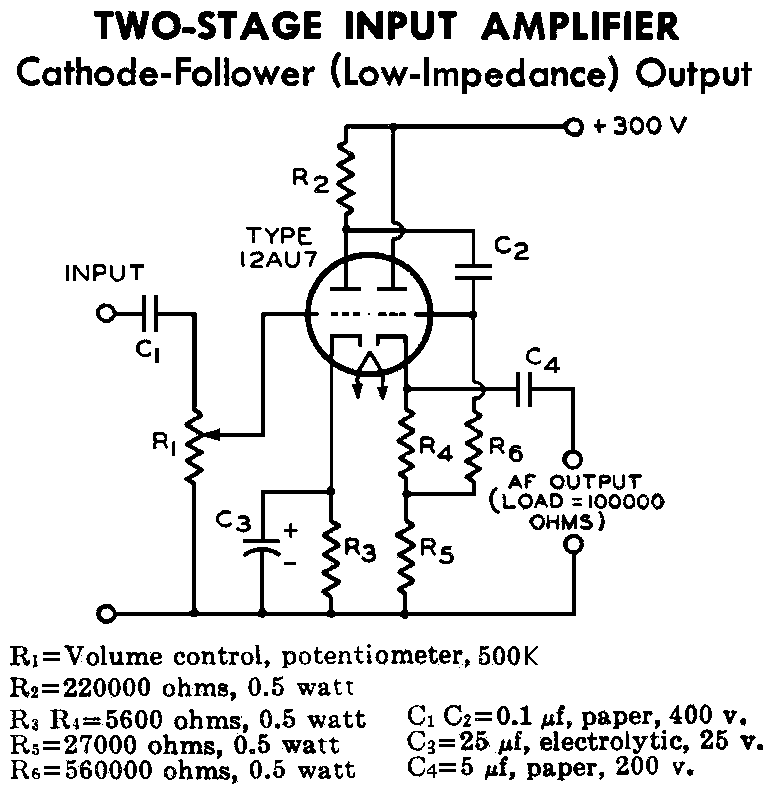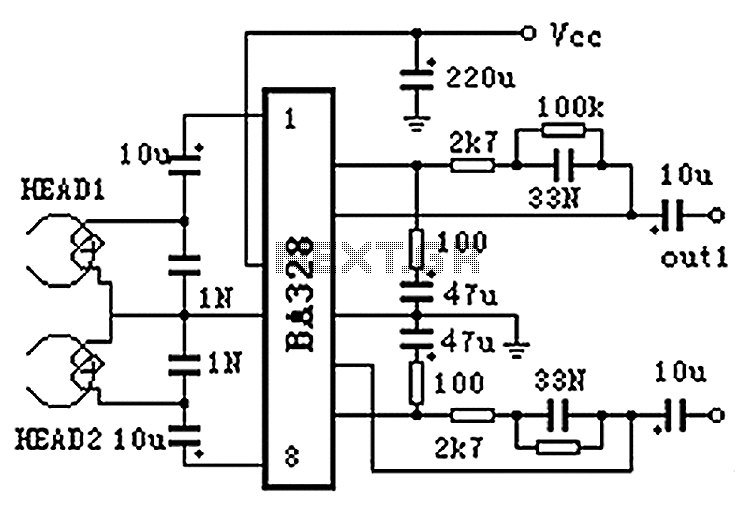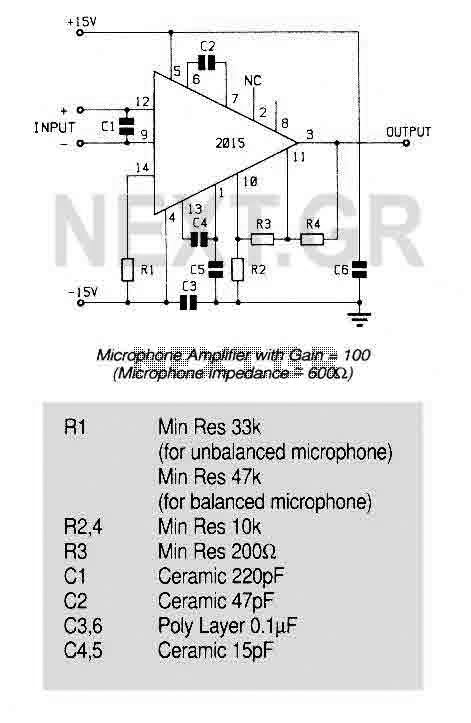
General purpose preamplifier
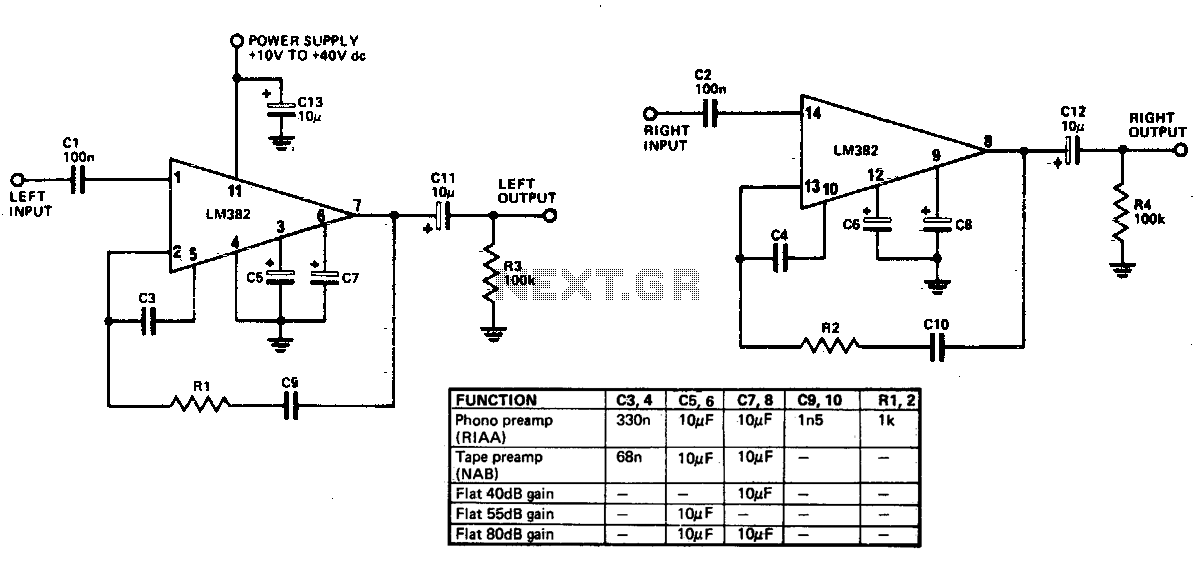
Limited information is available regarding the operation of the LM382, as the majority of its circuitry is integrated within the IC. Most components responsible for frequency determination are located on the chip, with only capacitors being externally mounted. The LM382 features a notable capability of rejecting ripple on the supply line by approximately 100 dB, significantly easing the quality requirements for the power supply.
The LM382 is a voltage regulator integrated circuit specifically designed for use in various electronic applications. Its internal architecture incorporates essential components that facilitate its primary function of regulating voltage while minimizing the external component count. The frequency-determining components are embedded within the IC, allowing for a compact design and enhanced reliability.
The external components primarily consist of capacitors, which are crucial for stabilizing the output and ensuring optimal performance. The selection of these capacitors is important, as they influence the transient response and overall stability of the regulator circuit. It is advisable to use low Equivalent Series Resistance (ESR) capacitors to maintain the desired performance characteristics.
One of the standout features of the LM382 is its high power supply rejection ratio (PSRR), which is approximately 100 dB. This characteristic is vital for applications where power supply noise can adversely affect the performance of sensitive electronic circuits. By effectively rejecting ripple and noise from the power supply, the LM382 allows for more lenient power supply specifications, making it suitable for use in environments with less-than-ideal power sources.
In summary, the LM382 is a highly integrated voltage regulator that simplifies design requirements while providing robust performance. Its internal frequency-determining components and exceptional ripple rejection capabilities make it an ideal choice for a wide range of electronic applications requiring stable voltage regulation.Not much can be said about how the LM382 works as most of the circuitry is contained within the IC. Most of the frequency-determining components are on the chip—only the capacitors are mounted externally The LM382 has the convenient characteristic of rejecting ripple on the supply line by about 100 dB, thus greatly reducing the quality requirment for the power supply.
The LM382 is a voltage regulator integrated circuit specifically designed for use in various electronic applications. Its internal architecture incorporates essential components that facilitate its primary function of regulating voltage while minimizing the external component count. The frequency-determining components are embedded within the IC, allowing for a compact design and enhanced reliability.
The external components primarily consist of capacitors, which are crucial for stabilizing the output and ensuring optimal performance. The selection of these capacitors is important, as they influence the transient response and overall stability of the regulator circuit. It is advisable to use low Equivalent Series Resistance (ESR) capacitors to maintain the desired performance characteristics.
One of the standout features of the LM382 is its high power supply rejection ratio (PSRR), which is approximately 100 dB. This characteristic is vital for applications where power supply noise can adversely affect the performance of sensitive electronic circuits. By effectively rejecting ripple and noise from the power supply, the LM382 allows for more lenient power supply specifications, making it suitable for use in environments with less-than-ideal power sources.
In summary, the LM382 is a highly integrated voltage regulator that simplifies design requirements while providing robust performance. Its internal frequency-determining components and exceptional ripple rejection capabilities make it an ideal choice for a wide range of electronic applications requiring stable voltage regulation.Not much can be said about how the LM382 works as most of the circuitry is contained within the IC. Most of the frequency-determining components are on the chip—only the capacitors are mounted externally The LM382 has the convenient characteristic of rejecting ripple on the supply line by about 100 dB, thus greatly reducing the quality requirment for the power supply.
